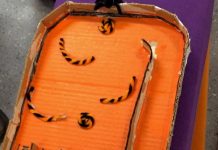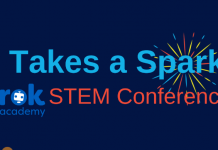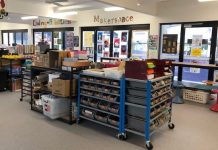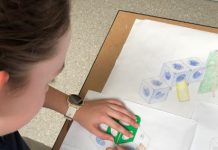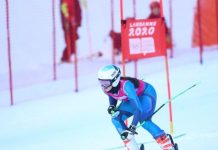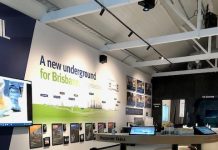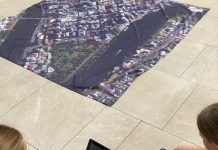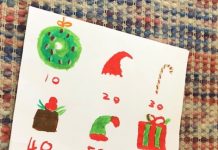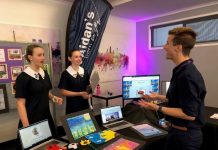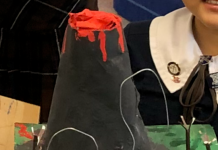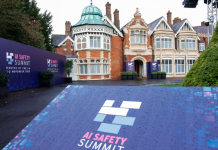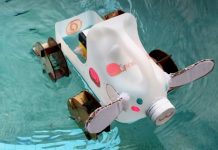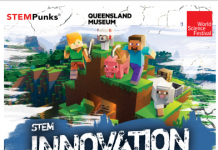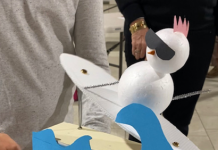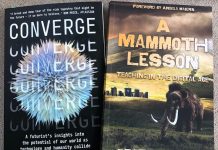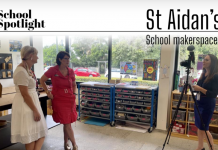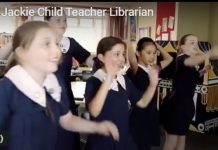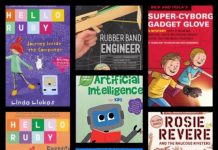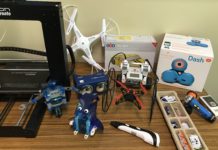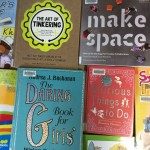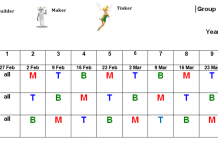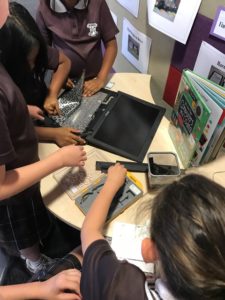When students engage in the many activities and opportunities provided in our Library Makerspace they relax and have fun. It is non-threatening, no testing or grading! It’s a place where they can fulfil their own desire to give things a go. Failing becomes part of the fun. To solve problems and challenges when creating and trying to make things work gives children confidence to succeed. Students can share, collaborate and help each other in the pursuit of making.
Makerspaces encapsulate the 4Cs of future skills of Creating, Communicating, Collaborating and Critical Thinking. and makerspaces also support student wellbeing and 3 Rs such as Resilience, Relationships (Respect) and Rebellion. The many opportunities in a Makerspace address these with teachers being facilitators and guiding students in their ‘making’.
Constructivism and Constructionism were born out of the research and life-long work of Seymour Papert, who was a student of the work of Jean Piaget. The maker movement is holistically tied to constructionism and constructivist theories. The creation of objects whether they be building a computer using Raspberry Pi, creating a video through the use of stop motion animation and green screen technology, or the development of programs using elements of coding in programs such as Scratch, all have at their core in constructionism.
In the educational context Fraillon, J. (2004) defines ‘wellbeing is the degree to which a student is functioning effectively in the school community’. Research evidence shows that students with high levels of wellbeing are more likely to have higher academic achievement and complete Year 12; better mental health; and a more pro-social, responsible and lawful lifestyle (Australian Catholic University and Erebus International, 2008)
There has been plenty published about the pressures and stresses our young people are feeling. This, of course, prevents students from fully engaging in their learning. If a child is happy and feels success they will achieve but with pressure and too many expectations a child is unable to reach their full potential. I have mentioned this in a previous post.
Providing a welcoming and exciting environment within the classroom, library or home for children to ‘make’, explore and discover increases a child’s wellbeing. This can be no-tech, low-tech or all-tech depending on what materials and technologies are available. 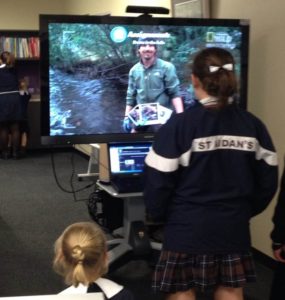 Sculpturing with newspaper, drawing with led pencils, sewing by hand or machine, creating animations or movies, playing X-Box Kinect or making games, building with K’Nex or LEGO, designing cards with paper circuitry, discovering the possibilities of 3D printing with a 3D pen or 3D printer or building a Piper computer are all activities students can enjoy and develop. This is an interesting website with some ideas to consider.
Sculpturing with newspaper, drawing with led pencils, sewing by hand or machine, creating animations or movies, playing X-Box Kinect or making games, building with K’Nex or LEGO, designing cards with paper circuitry, discovering the possibilities of 3D printing with a 3D pen or 3D printer or building a Piper computer are all activities students can enjoy and develop. This is an interesting website with some ideas to consider.
A child’s wellbeing is of utmost importance and a Makerspace can be one place to assist in ensuring a child is stimulated yet feels cheery, stress-free and relaxed. The joy and happiness we have seen in our Makerspace is evident of students’ wellbeing.
I’d like to share Zarah’s story with you. Zarah has been coming to our Makerspace for a few years. She is a sporty girl, reserved and sometimes insecure. She used to come in and play with ‘Goldie Blox’, build really interesting structures. She then started to build circuits with our Snap Circuit blocks. She loved ‘motors’ and was always creating things with the motors…windmills, flying shapes with propellers.
She wanted to enter the EKKA competion which was designing a toy. She designed a Draw bot in the shape of a crab. It had a motor, switch with battery, legs of textas to draw as it vibrated as she had off-centred the motor spindle. She won first prize!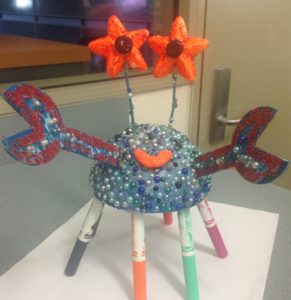
She has now joined our FLL team for this year’s competition. Her mother tells me how motivated she is and looks forward to Thursdays! We all know how success breeds success…..she has great ability in solving problems and she is building on that strength.
We like to celebrate the wonderful ‘making’ with our wider community, we often present on assembly. Recently 3 students presented at the Adolescent Success conference. Giving their voice to principals and educators on the impact the Makerspace has had on them and some projects they have been involved in, including building a Piper Computer, working with EL wire, building an arcade (Caines Arcade), building an XY Plotter and competing at FLL.
Spending time in the Makerspace assists students’ wellbeing……no question!

